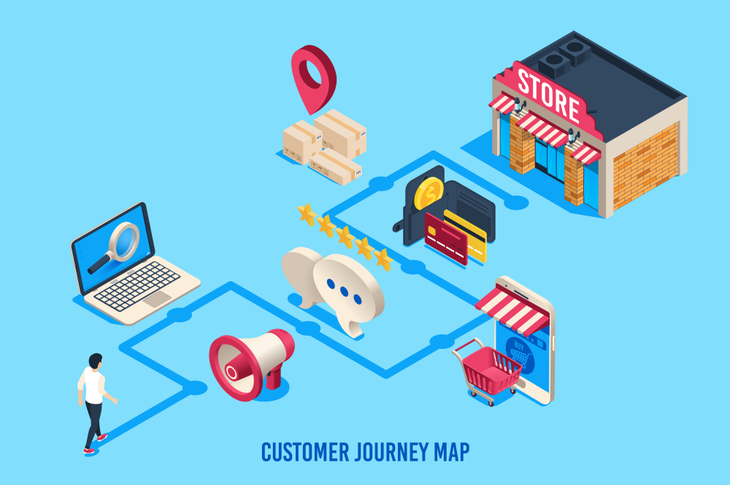How to feed content for best results along the buyer journey

Selling a product online isn’t easy in the face of intense competition. Content marketing thus becomes more significant than ever. And a good content marketing strategy should possess some essential ingredients to feed the consumer with the right content at the right time.
As a seasoned digital marketer, you will know that there are different stages – from brand awareness to consideration of your product to the decision to buy it. And of course, there’s the last stage where your customer recommends your product and the cycle repeats.
The million-dollar question is: what type of content should be fed at various stages of the buyer journey? Let’s take a look.
The brand awareness stage
Potential buyers in this stage are typically researching a subject to understand it better. They are more open to clicking on random links related to their subject as they haven’t developed any loyalty for any brand as such.
This is your chance to sneak in and entice them with compelling content. This will be your first ‘date’ with the prospective buyer. Your content should relate more to information such as blog posts, articles, infographics, white papers, educational videos, e-books, e-guides, and social posts (maybe with a link to your blog). This way, prospects will identify your website as a credible source of information.
Let’s assume your company sells supplements that help in losing weight. So the kind of blog or article you should create will be more along the lines of how to lose weight – while gently mentioning that supplements can help the cause – as against directly telling your users at this stage that supplements can help them shed weight.
The consideration stage
After your post proves good enough to hook random users and persuade them to read it completely, it would create a picture of your brand as a helpful resource in their minds. This is the time when buyers consider all the possible options in front of them before zeroing in on a particular one.
Content for the consideration stage could be customer testimonials, case studies, product comparison videos, e-books, reviews, podcasts, FAQs, and detailed blog posts. In the comparison chart, put your product against the possible options for the consumer and compare fairly. Don’t try to be pushy; it’s not a commercial, it’s about educating people so that they can make up their minds.
For example, let’s assume a user is searching for some material on SEO (search engine optimization) and they liked your blog (awareness stage). Now, you can present your exhaustive e-book called How to rank fast doing SEO? that took you many days to create. Try to be as detailed and comprehensive as possible and then offer the option to download it for free.
In exchange for your e-book, you can ask the user to subscribe to your newsletter or at least register with you. You have moved an inch closer to your prospective buyer.
The decision stage
This is the stage for which you worked so hard. It’s time to reap benefits. As the user is now more familiar with your brand, you can start pushing more brand-oriented content. Creating content with your USPs and highlighting what makes you different from the competition is a good way to approach the penultimate stage of the buyer journey.
Product reviews, testimonials, refund policies, FAQs, case studies, product demos, and product comparisons are some content forms you can flash. You can also offer a free trial of your program.
A buyer who has been referring to your website for SEO tips for a while and downloaded many free materials has essentially developed a bond, a trust, with your brand. This is the time to slide in your paid products which assure of a high ranking and hand-holding for new businesses.
The buyer retention stage
This is the stage that defines whether your product will be a hit. If the product is good, consumers are likely to buy again from you. They may also recommend it to their family and friends. In this context, besides your product, its advertising and packaging also play a key role to help brand recall.
Content suitable for this stage are email, blogs, video tutorials, news and event details, promotion and reward points, loyalty bonus, exclusive content, and contests.
Last words
Once a buyer has made a purchase, you can send them a personalized ‘thank you’ note to kick-start post-sale interaction. In your subsequent conversations, you can ask for feedback for making your product better, or offer a discount on their next spend with you.
Whatever the stage of the buyer journey, only focused and tailor-made content suitable for that particular stage will work. Plan your content marketing effectively with a focus on the buyer journey and create different buyer personas to get the most out of your efforts!
Related Links
How to create content for different stages of a user journey
